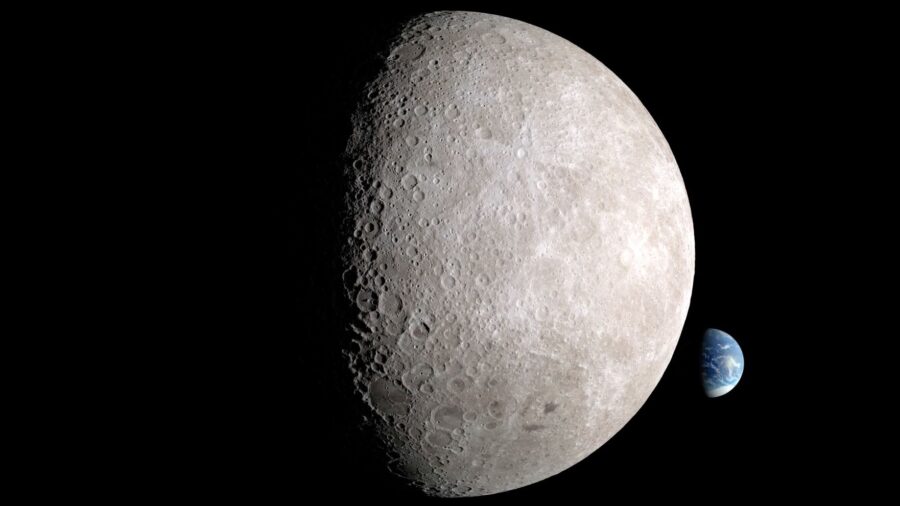October 2023 annular solar eclipse to pass through Utah
Aug 25, 2023, 1:07 PM | Updated: Oct 13, 2023, 4:51 pm

FILE: A composite of images of the first annular eclipse seen in the U.S. since 1994 shows several stages, left to right, as the eclipse passes through annularity and the sun changes color as it approaches sunset on May 20, 2012 in Grand Canyon National Park, Arizona. Differing from a total solar eclipse, the moon in an annular eclipse appears too small to cover the sun completely, leaving a ring of fire effect around the moon. The eclipse is casting a shallow path crossing the West from west Texas to Oregon then arcing across the northern Pacific Ocean to Tokyo, Japan. (Photo by David McNew/Getty Images)
(Photo by David McNew/Getty Images)
SALT LAKE CITY — The 2023 solar eclipse on Oct. 14 will give thousands of Utahns the chance to see its “ring of fire.”
When is the eclipse?
This year’s annular solar eclipse takes place on Saturday, Oct. 14. The moon’s shadow will pass over parts of Utah between 9:30 a.m. and 10:35 a.m. The closer you are to the middle of the eclipse’s path, the longer it will last. Parts of southwestern Utah will see a “ring of fire” for almost five minutes, while those who view the eclipse along the edges of its path will see the ring for around two minutes.
BYU and Utah football fans can catch their respective games (at TCU, vs. Cal) on Oct. 14 as both will kick off after the eclipse ends. Utah State fans are in the clear as the Aggies host Fresno State on Friday, Oct. 13.
Where can I see the 2023 solar eclipse?
The October 2023 eclipse path will pass over parts of central and southern Utah, including Bryce Canyon, Capitol Reef and Canyonlands national parks, Grand Staircase-Escalante and Natural Bridges national monuments, and Lake Powell.
The eclipse’s path curves south as it passes over the Beehive State, with the full eclipse visible along the I-15 corridor from Parowan to just south of Nephi. The full eclipse will be visible in several cities, including:
- Ephraim
- Manti
- Fillmore
- Richfield
- Aurora
- Torrey
- Beaver
- Boulder
- Monticello
- Blanding
- Mexican Hat
- Hatch
- Panguitch
Annular vs. total solar eclipse
The October eclipse is an annular solar eclipse, which will create a “ring of fire” effect. The moon will pass between the sun and Earth while it is at or near its farthest point from Earth. Because the moon is farther away from Earth, it appears smaller than the sun and does not completely cover the star.
During a total solar eclipse, the moon completely blocks the face of the sun. The sky will darken and people can see the sun’s corona or outer atmosphere. A total solar eclipse is the only type of solar eclipse where viewers can momentarily remove their eclipse glasses for the brief period of time when the moon is completely blocking the sun. The next total solar eclipse in the U.S. will be on April 8, 2024.

From left to right, these images show a total solar eclipse, annular solar eclipse, and partial solar eclipse. A hybrid eclipse appears as either a total or an annular eclipse (the left and middle images), depending on the observer’s location. Credits: Total eclipse (left): NASA/MSFC/Joseph Matus; annular eclipse (center): NASA/Bill Dunford; partial eclipse (right): NASA/Bill Ingalls
During a partial eclipse, only a part of the sun will appear to be covered, giving it a crescent shape. Some solar eclipses are hybrid, shifting between total and annular as the moon’s shadow moves across the globe due to the Earth’s curved surface.
Utah last experienced an annular eclipse when one swept across I-15 just a few miles south of Cedar City in 2012. The last total eclipse was the “Great American Eclipse” of 2017.
How to safely view the 2023 solar eclipse
Since the sun is not completely blocked by the moon during an annular eclipse, it is never safe to look directly at the sun without specialized eye protection. “Viewing any part of the bright Sun through a camera lens, binoculars, or a telescope without a special-purpose solar filter secured over the front of the optics will instantly cause severe eye injury,” NASA said.
Regular sunglasses, no matter how dark they are, are not safe for viewing the sun. To view the eclipse, you will need safe solar viewers that comply with the ISO 12312-2 international standard.
How to see the last ‘ring of fire’ eclipse in Utah until 2046
“Do NOT look at the Sun through a camera lens, telescope, binoculars, or any other optical device while wearing eclipse glasses or using a handheld solar viewer — the concentrated solar rays will burn through the filter and cause serious eye injury,” NASA added.
If you don’t have eclipse glasses or a handheld solar viewer, you can use an indirect viewing method.
Future eclipses
There are usually two solar eclipses worldwide each year, but up to five are possible (this won’t happen again until 2206). However, many take place in remote parts of the Earth. The next total solar eclipse will pass over the eastern half of the United States on April 8, 2024. Utah will see a partial solar eclipse in April, with 40%-60% of the sun blocked by the moon.
Utah will also see partial eclipses in January 2028, January 2029, March 2033, June 2039 and April 2043.
An August 2044 partial eclipse will near totality, but the big ticket will be the Aug. 12, 2045, total solar eclipse. It will pass over the Beehive State between I-80 and I-70, giving millions of Utahns a perfect view of the eclipse.
“I fell into a burning ring of fire…” ☀️
Don’t miss the “Ring of Fire” annular solar eclipse this Saturday, October 14 at 11:30AM ET 🖤 Watch live: https://t.co/BJMTVyIfza pic.twitter.com/B7ntmPFNG4— Johnny Cash (@JohnnyCash) October 10, 2023
















